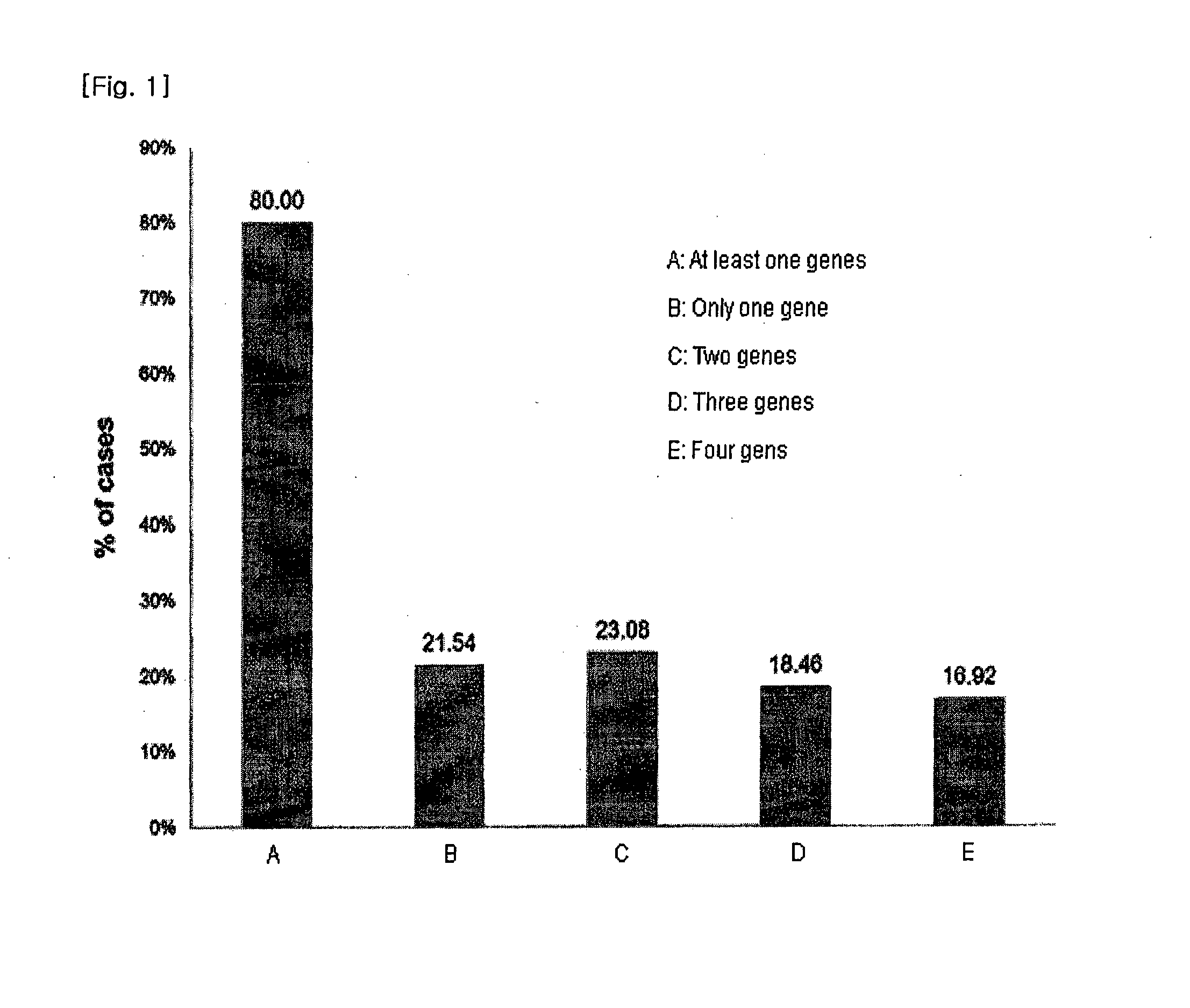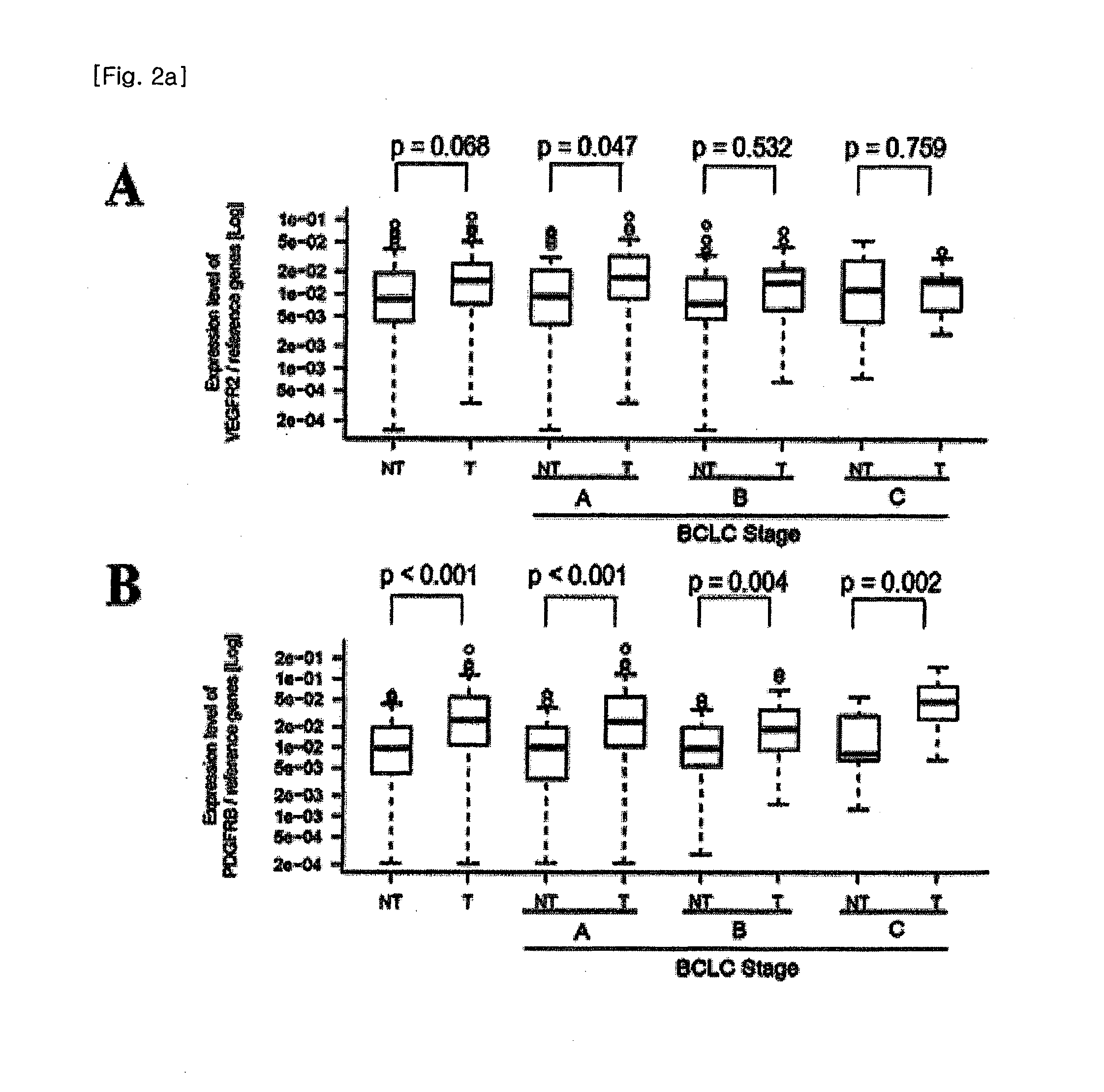Analytical method for increasing susceptibility of molecular targeted therapy in hepatocellular carcinoma
- Summary
- Abstract
- Description
- Claims
- Application Information
AI Technical Summary
Benefits of technology
Problems solved by technology
Method used
Image
Examples
Embodiment Construction
[0019]As used herein, the term “sorafenib” refers to the compound of the following Formula 1, including its pharmaceutically acceptable salt, for example ptoluenesulfonate salt.
[0020]The term “patient having susceptibility to sorafenib treatment” refers to a hepatocellular carcinoma patient showing response according to the sorafenib administration (i.e., tumor response). The “tumor response” refers to complete response, partial response, or stable disease according to the RECIST (Response Evaluation Criteria in Solid Tumors) defined in Llovet J M, et al. (2008) Sorafenib in advanced hepatocellular carcinoma. N Engl J Med 359: 378-390.
[0021]The term “hepatocellular carcinoma tissues” and “normal tissues” refer to the tissues samples externally discharged, via e.g., biopsy, from the hepatocellular carcinoma tissues and the surrounding non-tumor tissues derived from a hepatocellular carcinoma patient. In clinics, carcinoma tissues and surrounding normal tissues are generally collected...
PUM
| Property | Measurement | Unit |
|---|---|---|
| Electrical resistance | aaaaa | aaaaa |
| Level | aaaaa | aaaaa |
Abstract
Description
Claims
Application Information
 Login to View More
Login to View More - R&D
- Intellectual Property
- Life Sciences
- Materials
- Tech Scout
- Unparalleled Data Quality
- Higher Quality Content
- 60% Fewer Hallucinations
Browse by: Latest US Patents, China's latest patents, Technical Efficacy Thesaurus, Application Domain, Technology Topic, Popular Technical Reports.
© 2025 PatSnap. All rights reserved.Legal|Privacy policy|Modern Slavery Act Transparency Statement|Sitemap|About US| Contact US: help@patsnap.com



